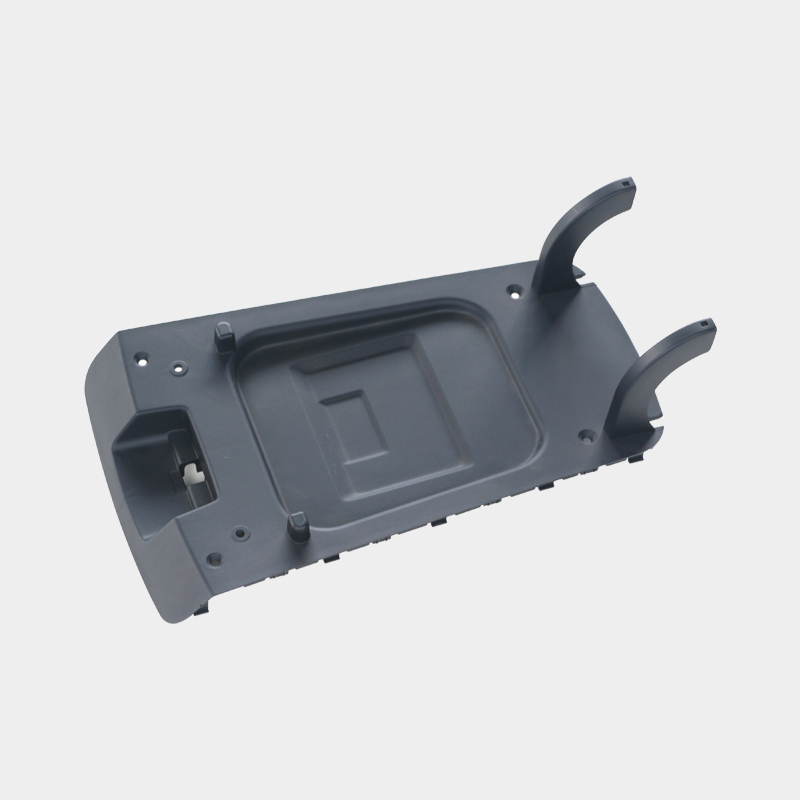Factors that need to be paid attention to when debuggin […]
Factors that need to be paid attention to when debugging the gas-assisted molding process:
1. For air-needle panel plastic molds, when the air-needle is pressed into and deflated, it is most likely to produce unbalanced air intake, which makes debugging more difficult. The main phenomenon is shrinkage. The solution is to check the gas fluency when deflating;
2. The temperature of the rubber compound is one of the key factors affecting the normal production:
The quality of gas-assisted products is more sensitive to the temperature of the rubber compound. If the nozzle material temperature is too high, it will cause the product material to bloom and burn; if the material temperature is too low, it will cause cold glue, cold nozzle, and blocking of the air needle. The main phenomenon reflected by the product is shrinkage and material spoiling. The solution is to check whether the temperature of the rubber is reasonable.
3. In the manual state, check whether there is any overflow when the needle-sealing nozzle returns:
If this phenomenon occurs, it means that the gas-assisted sealing needle fails to seal the nozzle. During gas injection, high-pressure gas will flow back into the material pipe. The main phenomenon is the large area of the nozzle is burnt and the material is spattered, and the material return time is greatly reduced, and the gas will be discharged when the sealing needle is opened. The main solution is to adjust the length of the sealing needle rod.
4. Check whether the gas-assisted sensor switch is sensitive, otherwise it will cause unnecessary losses.
5. Gas-assisted products rely on gas to maintain pressure, and the glue can be appropriately reduced when the product shrinks. The main purpose is to reduce the pressure and space inside the product, and make it easier for the gas to penetrate into the thick place to compensate.

Common defects and elimination methods of the finished product of gas-assisted injection molding process:
1. Gas penetration:
This defect can be solved by increasing the degree of pre-filling, speeding up the injection temperature, increasing the melt temperature, shortening the gas delay time, or selecting materials with higher fluidity.
2. There is no chamber or the chamber is too small:
It is possible to reduce the pre-filling degree, increase the melt temperature and gas pressure, shorten the gas delay time, extend the gas pressure holding and pressure relief time, select materials with higher fluidity, enlarge the gas channel, and use the side cavity method. Kind to solve. In addition, you can check whether the gas needle is faulty or blocked, and whether the gas pipeline is leaking.
3. Sink marks:
The methods that can be referred to to eliminate sink marks are to reduce the filling degree and melt temperature, increase the pressure of the melt, shorten the gas delay time, increase the gas pressure, extend the gas pressure relief time, reduce the mold temperature, and increase the gate diameter and runner mouth. And airway etc. In addition, the pressure curve of gas injection can be adjusted to check whether the pipeline and gas needle are working properly.
4. The weight is not stable enough:
Reducing the injection speed, increasing the back pressure, improving the mold exhaust, changing the gate position and enlarging the gate are all conducive to overcoming this defect.
5. The airway wall is too thin:
Methods such as reducing the injection speed, lowering the barrel temperature and gas pressure, extending the gas delay time, and increasing the air duct can be used to overcome this defect.
6. Finger effect:
When this phenomenon occurs, you can consider increasing the filling level, reducing the injection speed, reducing the barrel temperature and gas pressure, extending the gas delay time, shortening the gas and pressure relief time, resetting the pressure curve of the gas injection, and selecting the lower fluidity Materials, reduce mold temperature and reduce wall thickness. In addition, the change of the gate position and the enlargement of the air passage also help to improve this defect.
7. Gas enters the screw barrel:
When this phenomenon occurs, you can consider increasing the holding pressure and holding time of the melt, reducing the nozzle temperature and gas pressure, shortening the holding time and pressure relief time of the gas, resetting the pressure curve of the gas injection, and choosing lower fluidity Materials, reduce the gate diameter and change the pouring position.
8. Burst occurs after demolding:
When this phenomenon occurs, you can consider reducing the gas pressure, extending the pressure holding time, resetting the pressure curve of the gas injection, reducing the gas volume, etc., and checking whether the gas needle is blocked.
Taizhou Huangyan Chuangji Mould Industry Co.,Ltd.